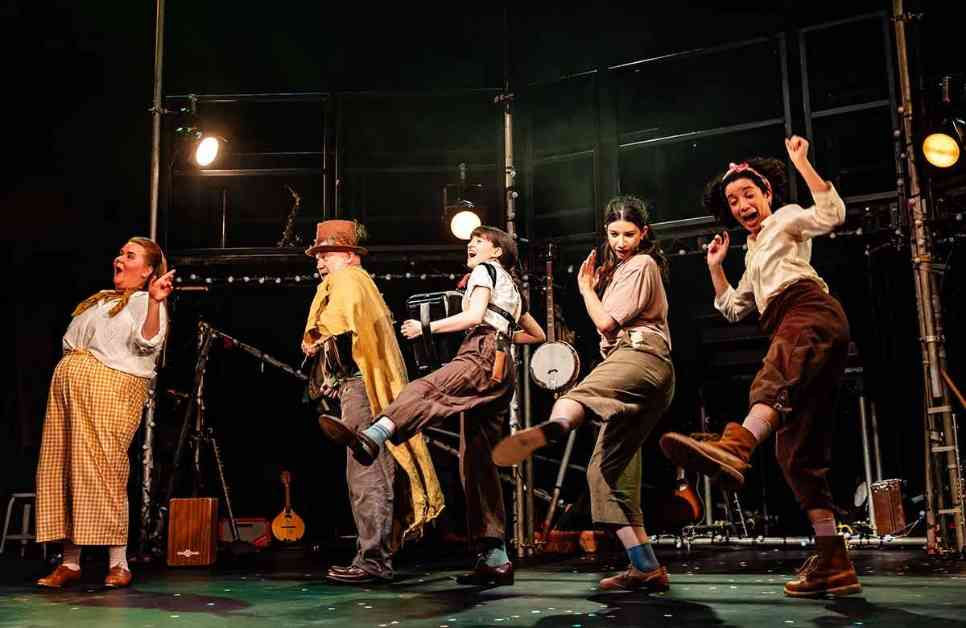Disney’s Dominance in Fairy Tales
The world of fairy tales has long been a realm of magic, wonder, and timeless stories that captivate audiences of all ages. From classic tales like Cinderella and Snow White to more modern interpretations like Beauty and the Beast and Frozen, fairy tales have been a staple of entertainment for generations. However, in recent years, one company has come to dominate the fairy tale landscape like never before – Disney.
Disney’s influence in the world of fairy tales is undeniable. With their iconic animated films and now live-action adaptations, Disney has become synonymous with bringing these classic stories to life in a way that captivates audiences around the globe. From their groundbreaking animated features like Snow White and the Seven Dwarfs to their more recent live-action remakes like Beauty and the Beast, Disney has set the standard for how these timeless tales are told on the big screen.
But with this dominance comes a question of how much control Disney should have over these stories. Should one company have the power to monopolize these beloved tales, shaping them in their image and controlling how they are presented to audiences? This is a question that has sparked much debate among fans, creators, and industry professionals alike.
The Impact on the Industry
The implications of Disney’s monopolization of fairy tales are far-reaching and have a significant impact on the entertainment industry as a whole. By exerting such control over these stories, Disney is able to dictate not only how they are presented on screen but also how they are marketed, merchandised, and consumed by audiences.
One of the most visible effects of Disney’s dominance is the way in which their versions of these stories have become the definitive interpretations in the eyes of many. For example, the iconic yellow dress worn by Belle in Disney’s Beauty and the Beast has become synonymous with the character, to the point where audiences now expect to see it in any adaptation of the story. This kind of branding and marketing power gives Disney a significant edge in the industry, allowing them to shape audience expectations and drive ticket sales for their films and merchandise.
But this level of control also raises questions about creativity, originality, and the freedom of artists to interpret these stories in their own way. As James Haddrell, artistic director of Greenwich Theatre, notes, the challenge of adapting a well-loved story lies in finding new ways to tell it while still honoring its core elements. By reimagining familiar tales like Beauty and the Beast with new characters, plot twists, and musical numbers, artists can breathe new life into these stories and offer audiences a fresh perspective on classic tales.
Challenging the Status Quo
While Disney’s dominance in the fairy tale genre is undeniable, there is also a growing movement to challenge the status quo and offer alternative interpretations of these stories. By reimagining classic tales through a different lens, artists and creators can push the boundaries of traditional storytelling and offer audiences a new way to experience these timeless tales.
For example, in Greenwich Theatre’s adaptation of Beauty and the Beast, Belle is presented as a more complex character with two sisters who play key roles in the story. The beast’s castle is populated by spirits rather than enchanted furniture, offering a fresh take on the classic tale. By subverting audience expectations and introducing new elements to the story, artists can create a more inclusive and diverse representation of these beloved characters and themes.
This kind of innovation and creativity is essential for the industry to continue evolving and engaging audiences in new and exciting ways. By challenging the dominance of Disney and offering alternative interpretations of classic tales, artists can keep the fairy tale genre fresh, relevant, and engaging for audiences of all ages.
In conclusion, Disney’s monopolization of fairy tales has had a profound impact on the industry, shaping audience expectations and driving ticket sales for their films and merchandise. However, there is also a growing movement to challenge the status quo and offer alternative interpretations of these stories, pushing the boundaries of traditional storytelling and offering audiences a new way to experience these timeless tales. By embracing creativity, originality, and diversity in storytelling, artists can keep the fairy tale genre alive and relevant for generations to come.

